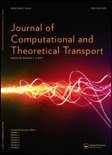
Journal of Computational and Theoretical Transport
Scope & Guideline
Bridging Disciplines, Transforming Transport Knowledge
Introduction
Aims and Scopes
- Computational Methods in Transport Phenomena:
This area includes the development and application of numerical methods, such as Monte Carlo simulations, finite element methods, and meshfree techniques, to solve complex transport equations. - Theoretical Frameworks for Transport:
Research that focuses on the theoretical underpinnings of transport phenomena, including analytical solutions, asymptotic analysis, and mathematical modeling of various transport mechanisms. - Nanofluid and Multiphase Transport:
Studies exploring the behavior of nanofluids and multiphase systems under different conditions, emphasizing their applications in engineering and material science. - Radiative Transport and Energy Transfer:
Investigations into radiative heat transfer processes, including the modeling of scattering, absorption, and emission phenomena in various materials and conditions. - Application of Transport Theory in Diverse Fields:
Research that applies transport theory to real-world problems in fields such as nuclear engineering, environmental science, and biomedical engineering.
Trending and Emerging
- Advanced Nanofluid Studies:
There is a notable increase in research focusing on nanofluids, particularly their thermal and transport properties, driven by their applications in energy systems and materials science. - Machine Learning and Data-Driven Approaches:
Emerging methodologies that incorporate machine learning and data-driven techniques for solving transport problems are gaining traction, indicating a shift towards integrating AI with traditional transport theories. - Multiscale Modeling and Simulation:
A growing trend towards multiscale approaches that bridge different scales of transport phenomena is evident, reflecting the complexity of real-world applications and the need for comprehensive models. - Interdisciplinary Applications of Transport Theory:
Research increasingly spans various disciplines, such as biomedical engineering and environmental science, showcasing the versatility of transport theory in addressing contemporary challenges. - Complex Systems and Nonlinear Dynamics:
There is an emerging interest in exploring complex systems and the nonlinear dynamics of transport phenomena, highlighting the need for advanced computational techniques to model such systems.
Declining or Waning
- Classical Neutron Transport Problems:
Research on traditional neutron transport problems has seen a decrease, possibly due to the development of more advanced computational techniques and models that address broader transport phenomena. - Simplistic Models of Particle Transport:
There appears to be a waning interest in overly simplistic models that do not incorporate complex interactions, as researchers now prefer more sophisticated approaches that capture the intricacies of transport processes. - Static Analytical Solutions:
The focus on static analytical solutions to transport equations has diminished, as dynamic simulations and numerical methods have become more favored due to their ability to handle non-linearities and time-dependent scenarios. - Traditional Fluid Dynamics Approaches:
Research employing classical fluid dynamics principles without integration of modern computational techniques is less frequently published, reflecting a trend towards more interdisciplinary and advanced methodologies.
Similar Journals

Nuclear Materials and Energy
Unlocking the Potential of Nuclear Materials and EnergyNuclear Materials and Energy is a premier open-access journal published by Elsevier, dedicated to the dynamic fields of nuclear science and materials engineering. Since its inception in 2015, the journal has made significant strides in disseminating cutting-edge research, establishing itself as a vital resource for researchers and professionals alike. With a commendable impact factor and ranked in the Q2 category for both Materials Science (miscellaneous) and Nuclear and High Energy Physics, and impressively in Q1 for Nuclear Energy and Engineering in 2023, Nuclear Materials and Energy stands out in the academic community. This journal aims to bridge the gap between fundamental research and practical applications, promoting innovative solutions in the efficient utilization of nuclear materials and energy technologies. Open access since 2015, the journal ensures wide dissemination and accessibility of crucial findings, making it an essential platform for advancing knowledge and fostering collaboration in these pivotal fields.
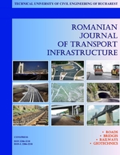
Romanian Journal of Transport Infrastructure
Transforming Transport Challenges into SolutionsWelcome to the Romanian Journal of Transport Infrastructure, a premier publication dedicated to advancing knowledge in the field of transport infrastructure engineering and management. Published by SCIENDO, this open access journal has been committed to sharing significant research and developments since 2012, ensuring that vital information is readily available to the global academic community. The journal's ISSN is 2286-2218, and it provides a platform for researchers, professionals, and students to collaborate and disseminate findings related to transport systems planning, design, construction, and maintenance. The Romanian Journal of Transport Infrastructure aims not only to contribute to scholarly literature but also to influence policy and practice related to transportation challenges. Our editorial team strives to maintain high standards of academic rigor and relevance, making this journal an essential resource for anyone involved in the transport infrastructure sector.
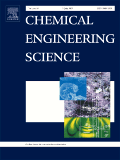
CHEMICAL ENGINEERING SCIENCE
Advancing the Frontiers of Chemical Engineering InnovationChemical Engineering Science is an esteemed journal published by Pergamon-Elsevier Science Ltd, dedicated to advancing the field of chemical engineering through high-quality research and innovation. With a storied history spanning from 1951 to 2025, this journal is recognized as a leading platform for disseminating cutting-edge studies, encompassing a diverse range of topics within chemical engineering, applied mathematics, and industrial engineering. Notably, it holds a prestigious Q1 ranking in several categories, including Chemical Engineering and Industrial and Manufacturing Engineering, indicating its significant impact and influence in these fields. The journal is not open access, yet it maintains a robust readership and is widely cited in academic circles, reflecting its vital role in shaping modern engineering practices. As a vital resource for researchers, professionals, and students alike, Chemical Engineering Science continues to bridge theoretical concepts and practical applications, fostering a deeper understanding of the complex challenges in chemical processes and manufacturing.

European Transport Research Review
Exploring Innovations in European MobilityEuropean Transport Research Review is a prestigious academic journal published by Springer, focusing on cutting-edge research in the fields of automotive engineering, mechanical engineering, and transportation. Since its transition to an Open Access model in 2009, the journal has significantly contributed to the dissemination of knowledge, allowing unexplored insights to reach a global audience. Based in Germany, this journal stands out with its high impact factor and impressive Scopus rankings; it holds a Q1 status in both the Automotive and Mechanical Engineering categories, reflecting its prominence in academic and professional circles. With a commitment to advancing the frontiers of transport research, the European Transport Research Review serves as an essential resource for researchers, professionals, and students seeking to stay abreast of the latest developments and innovations in these critical sectors. Given its extensive reach and robust editorial guidelines, the journal attracts a diverse range of submissions that explore the multifaceted dynamics of transport systems across Europe and beyond.

Water Waves
Fostering Excellence in Wave ResearchWater Waves is a leading academic journal dedicated to advancing research in the fields of analysis, applied mathematics, computational mathematics, and modeling and simulation. Published by SPRINGERNATURE, the journal has positioned itself as a vital resource for researchers and professionals who are exploring the dynamic behaviors of water waves and their applications across various scientific disciplines. With an ISSN of 2523-367X and an E-ISSN of 2523-3688, the journal provides a robust platform for disseminating high-quality research findings, featuring works that reflect innovative methodologies and significant contributions to the understanding of water dynamics. With its publication corridor extending from 2019 to 2024 and achieving a commendable Q2 quartile ranking in multiple mathematics categories for 2023, "Water Waves" emphasizes its commitment to fostering scholarly excellence. Despite its evolving status, the journal remains accessible to a wide audience, underscoring its significance in shaping the discourse in its respective fields, while also providing vital insights and fostering collaboration among researchers, academicians, and students alike.
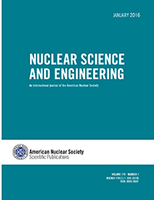
NUCLEAR SCIENCE AND ENGINEERING
Driving Progress in Nuclear TechnologyNUCLEAR SCIENCE AND ENGINEERING, published by Taylor & Francis Inc, is a leading journal in the field of nuclear energy and engineering, providing a vital platform for disseminating cutting-edge research and advancements from both academia and industry. With an ISSN of 0029-5639 and an E-ISSN of 1943-748X, the journal boasts a notable impact factor and is categorized in the Q2 quartile for 2023, reflecting its influence and quality in the field. Covering a comprehensive scope from the inception of nuclear technology in 1969 to contemporary advancements forecasted for 2024, it ranks #38 out of 77 in the Scopus Energy – Nuclear Energy and Engineering category, placing it in the 51st percentile. Although the journal is not open access, it remains essential for researchers, professionals, and students seeking to stay abreast of the latest developments and innovations in nuclear science. Located in the heart of Philadelphia, NUCLEAR SCIENCE AND ENGINEERING contributes significantly to the advancement of nuclear engineering knowledge and practice, making it a crucial resource for anyone involved in this dynamic field.

International Journal of Transport Economics
Unveiling Key Insights in Transport Policy and EconomicsWelcome to the International Journal of Transport Economics, a premier platform published by FABRIZIO SERRA EDITORE that explores the intricate relationship between transport economics and its impact on societal progress. Established to foster academic discourse, this journal serves as a vital resource for researchers, professionals, and students in the fields of economics, transportation, and public policy. With a commitment to publishing high-quality, peer-reviewed articles, the journal delves into essential topics such as transport policy analysis, infrastructure economics, and sustainable transportation solutions. Although it operates under a traditional subscription model, the journal remains dedicated to disseminating crucial findings that influence transport strategies worldwide. Nestled in the heart of Pisa, Italy, the International Journal of Transport Economics stands as a beacon of knowledge, playing a pivotal role in shaping the future of transport economics and promoting innovative research in the discipline.

Case Studies on Transport Policy
Exploring the intersection of research and real-world transport strategies.Case Studies on Transport Policy, published by Elsevier, is an influential journal in the fields of transport policy, urban studies, and geographic planning. With its ISSN 2213-624X and E-ISSN 2213-6258, this quarterly journal has consistently maintained a strong impact within its scope, attaining Q1 rankings in Geography, Planning and Development and Urban Studies, as well as a Q2 ranking in Transportation for 2023. The journal provides a platform for high-quality research and practical case studies that contribute significantly to the understanding and improvement of transport systems and policies worldwide. Its rigorous peer-review process ensures that published articles are of the highest academic standard, appealing to researchers, policy-makers, and professionals alike. With a strong presence in several social sciences categories, the journal ranks highly in Scopus, positioning itself as a critical resource for those engaged in the strategic development and analysis of transport solutions. Located in Amsterdam, Netherlands, it aims to bridge the gap between research and real-world applications, facilitating knowledge exchange and innovative strategies in transport policy.
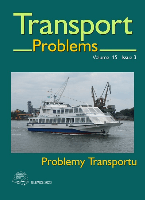
Transport Problems
Exploring Innovative Solutions in Transport EngineeringTransport Problems, published by the Silesian University of Technology, Faculty of Transport, is a distinguished open-access journal that has been advancing scholarship in the fields of Automotive Engineering, Mechanical Engineering, and Transportation since its inception in 2007. With an ISSN of 1896-0596 and an E-ISSN of 2300-861X, this journal serves as a vital platform for researchers and practitioners to disseminate innovative research findings and explore fundamental issues in transport systems and technologies. Based in Poland, the journal covers various topics including transportation logistics, vehicle dynamics, and environmental impacts, thereby addressing critical challenges faced in the transportation sector globally. As reflected in its Scopus rankings, the journal occupies respectable quartiles and continues to contribute valuable insights to the academic community. By making its content freely accessible, Transport Problems significantly enhances the ability of researchers and students alike to engage with the latest developments in transport engineering and contribute to this ever-evolving field.

CHINA OCEAN ENGINEERING
Pioneering Research at the Intersection of Ocean and EngineeringCHINA OCEAN ENGINEERING, published by SPRINGER MEDIZIN VERLAG GmBH, is a prominent journal in the fields of Mechanical Engineering, Ocean Engineering, and associated environmental sciences. With its ISSN 0890-5487 and E-ISSN 2191-8945, this journal caters to a broad audience engaged in research and development related to ocean systems and technologies. As evidenced by its Q2 ranking in Mechanical Engineering and Ocean Engineering, as well as its Q3 placement in Oceanography and Renewable Energy, Sustainability and the Environment for 2023, it provides a critical platform for disseminating innovative research and progressive ideas in these dynamic and interdisciplinary fields. The journal is committed to advancing the science of ocean engineering by focusing on sustainable practices and technological advancement, making it an essential resource for researchers, professionals, and students alike. With contributions from leading experts worldwide, CHINA OCEAN ENGINEERING is dedicated to exploring the multifaceted challenges and opportunities presented by our oceans.